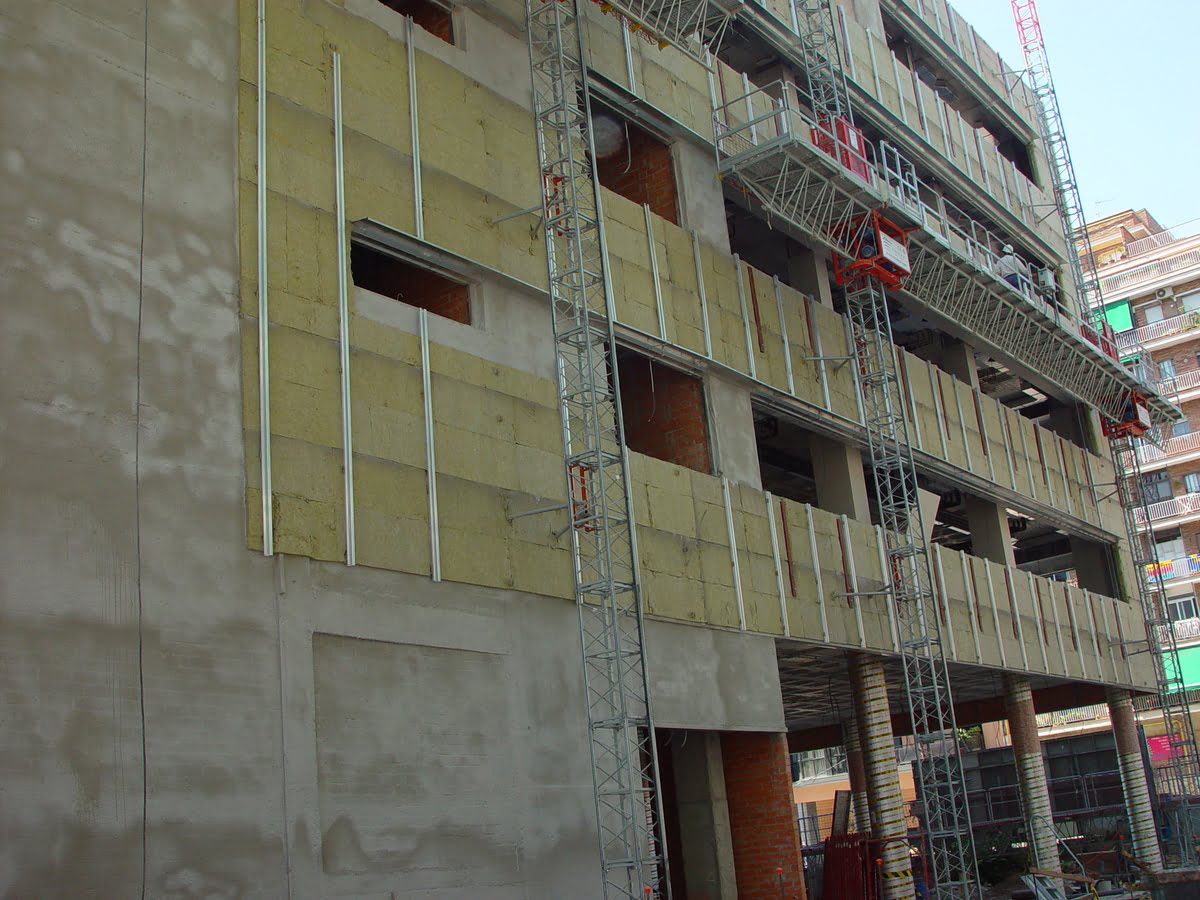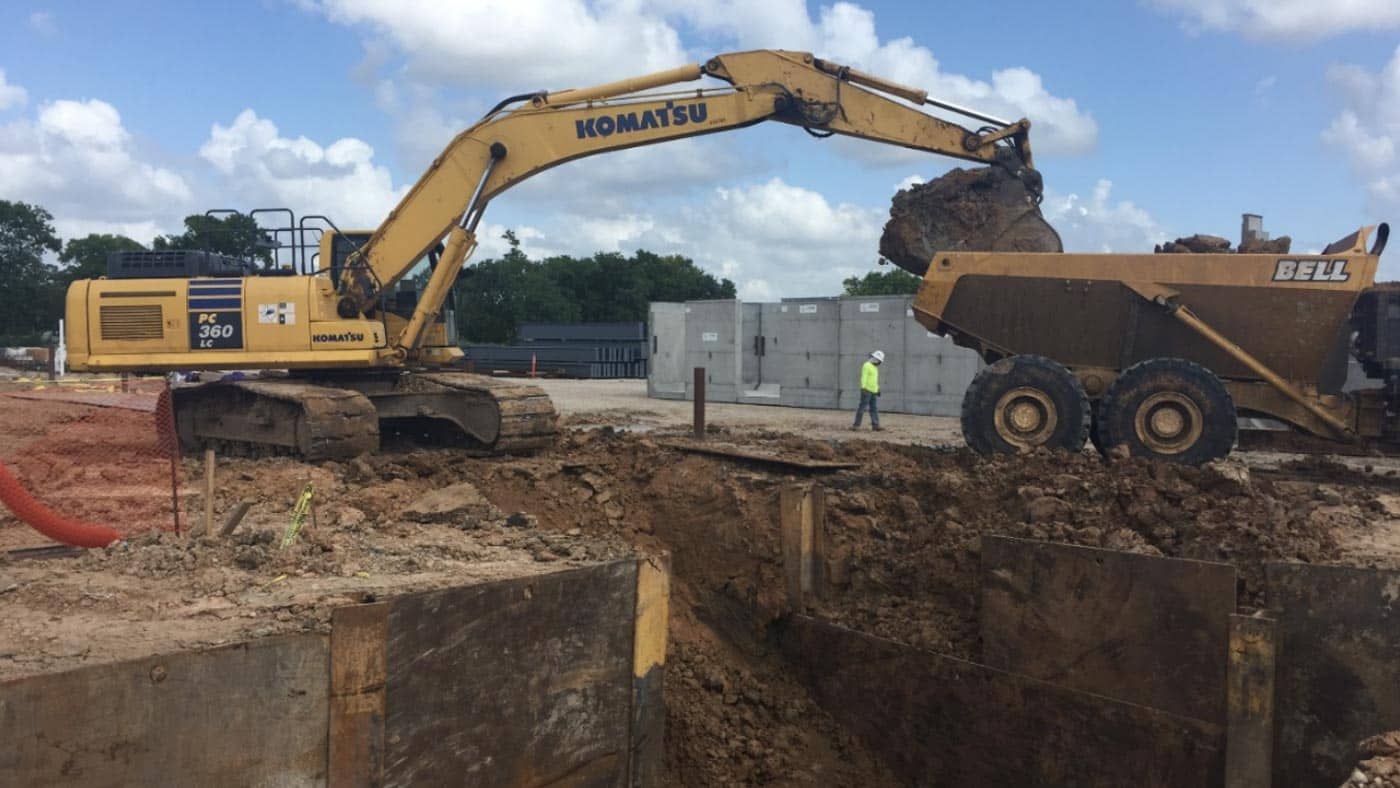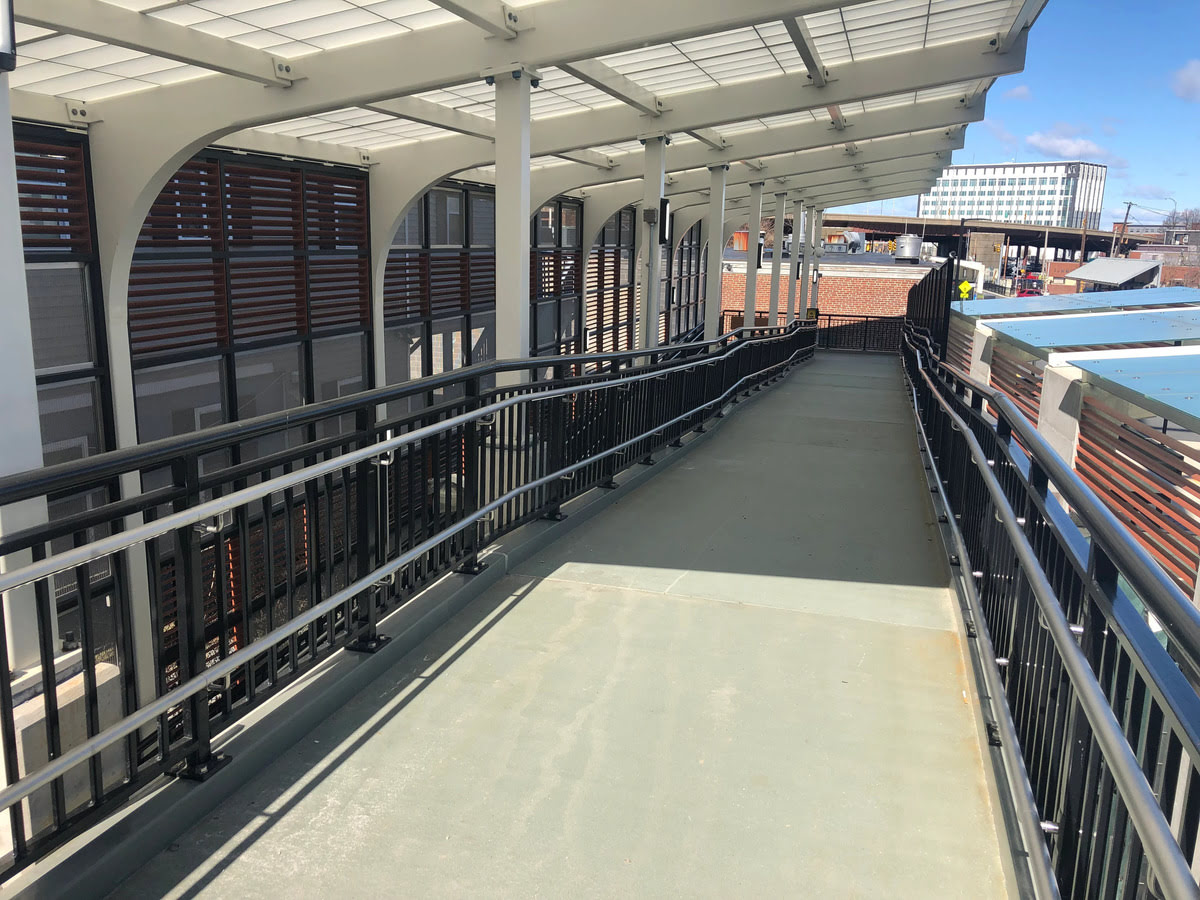Home>diy>Building & Construction>What Does “Contingency” Mean In Construction


Building & Construction
What Does “Contingency” Mean In Construction
Modified: January 4, 2024
Discover the meaning of "contingency" in building construction and how it impacts project planning, budgeting, and risk management.
(Many of the links in this article redirect to a specific reviewed product. Your purchase of these products through affiliate links helps to generate commission for Storables.com, at no extra cost. Learn more)
Introduction
Welcome to the world of construction, where meticulous planning and strategic decision-making are crucial for successful project execution. In the construction industry, there are various factors that can influence the outcome of a project, and one of the key elements that project managers need to consider is contingency.
Contingency, in the context of construction, refers to an additional amount of time, resources, or money that is set aside to account for unforeseen circumstances or risks. It acts as a buffer to mitigate any potential disruptions, delays, or unexpected costs that may arise during the construction process.
Contingency planning is an essential part of project management, as it allows construction professionals to proactively address potential issues and minimize their impact on the project timeline and budget. By incorporating contingency into the project plan, construction teams can adapt and respond to unforeseen events effectively, ensuring the project’s overall success.
In this article, we will delve deeper into the concept of contingency in construction, exploring its definition, importance, types, and allocation methods. We will also discuss the challenges associated with implementing contingency measures and provide examples of how contingency is applied in real-world construction projects.
So, whether you are a construction professional seeking a better understanding of contingency or a project stakeholder looking to familiarize yourself with this crucial aspect of construction, this article will serve as a comprehensive guide to help you navigate the world of contingency in construction projects.
Key Takeaways:
- Contingency in construction is a vital safety net, allowing project teams to proactively address unforeseen events, manage risks, and ensure project success within defined timelines and budgets.
- Effective contingency management requires proactive risk assessment, clear protocols, and stakeholder collaboration. Overcoming challenges such as scope creep and misuse of funds is crucial for optimal contingency utilization.
Read more: What Is A Construction Contingency
Definition of Contingency in Construction
In the construction industry, contingency refers to a predefined amount of additional time, resources, or money that is allocated within a project’s budget and schedule to account for unforeseen events or risks. It serves as a cushion or buffer to address unexpected circumstances that may arise during the construction process, such as design changes, weather delays, material shortages, or unforeseen site conditions.
The purpose of having contingency in construction projects is to minimize the impact of these unforeseen events on the project’s overall timeline and budget. It allows project managers and construction teams to have a proactive approach to risks, ensuring that they have the necessary resources and flexibility to address any challenges that may arise.
Contingency is not meant to be a slush fund or an additional source of funding that can be used for any purpose. It is specifically allocated for addressing unexpected events or risks that are reasonably anticipated in the construction industry. The amount of contingency varies from project to project and is usually based on factors such as project complexity, risk assessment, and historical data from similar projects.
Contingency is typically established during the project planning phase, where a thorough analysis of potential risks and uncertainties is conducted. This analysis helps determine the expected level of risk and the appropriate amount of contingency to allocate. It is essential to have a clear and transparent process for determining and documenting contingency in construction projects to ensure accountability and effective resource management.
It is important to note that contingency is different from the project’s overall budget and is not meant to cover routine project expenses or changes that are within the scope of the original plan. It is specifically reserved for addressing unexpected events that fall outside the project’s baseline assumptions and are beyond the control of the project team.
In summary, contingency in construction is a predefined amount of additional time, resources, or money that is set aside within a project’s budget and schedule to tackle unforeseen events or risks. It acts as a safety net to absorb the impact of unexpected circumstances, allowing construction teams to adapt and ensure the successful completion of the project.
Importance of Contingency in Construction Projects
Contingency planning is of utmost importance in construction projects, as it provides several key benefits that contribute to the overall success of the project. Here are some reasons why having contingency is crucial:
- Risk mitigation: Construction projects are inherently exposed to a variety of risks and uncertainties, ranging from unpredictable weather conditions to unforeseen ground conditions. By having contingency, project managers can proactively identify and address potential risks, minimizing their impact on the project timeline and budget. It allows for better risk management and ensures that construction teams are prepared to handle any unexpected events that may arise.
- Flexibility and adaptability: Contingency provides construction teams with the necessary flexibility to adapt to changing circumstances. It allows for adjustments to be made when unforeseen events occur, ensuring that the project can progress smoothly. Without contingency, unexpected disruptions could severely impact the project’s progress, leading to delays and cost overruns.
- Optimal resource allocation: With contingency in place, project managers can allocate resources effectively. It provides a buffer for unexpected costs, allowing the project team to reallocate resources as needed without compromising the overall project objectives. This ensures that resources are utilized efficiently and that the project stays on track despite any unforeseen circumstances.
- Enhanced stakeholder management: Contingency planning also plays a vital role in managing project stakeholders. By having a well-defined contingency plan, project teams can communicate openly with stakeholders about potential risks and uncertainties. This transparency builds trust and confidence among stakeholders, as they can see that the project team is prepared to handle unexpected events and minimize their impact on the project’s success.
- Reduced legal and financial risks: Unforeseen events in construction projects can sometimes lead to disputes and claims, which can result in significant legal and financial risks. By having contingency, the project team can address these issues promptly, minimizing the chances of legal disputes and reducing financial liabilities. It provides a level of protection against unexpected circumstances that could potentially lead to costly litigation.
In essence, contingency is essential in construction projects as it allows for effective risk management, flexibility, optimal resource allocation, enhanced stakeholder management, and reduced legal and financial risks. It enables construction teams to be prepared for the unexpected and ensures that the project can adapt and thrive in the face of uncertainties.
Factors Affecting the Amount of Contingency
The amount of contingency allocated in a construction project can vary depending on several factors. The goal is to determine a reasonable and adequate amount that would cover potential risks and uncertainties. Here are some key factors that influence the amount of contingency in construction projects:
- Project Complexity: The complexity of the project plays a significant role in determining the amount of contingency required. Projects that involve innovative designs, intricate structural elements, or unique site conditions are more prone to uncertainties and may require a higher level of contingency to account for potential complications.
- Project Size and Duration: The size and duration of the project also impact the amount of contingency. Larger projects with longer timelines are likely to have more potential risks and uncertainties, requiring a higher level of contingency to account for possible delays, design changes, or unforeseen events that could occur over an extended period.
- Project Location: The location of the project can influence the amount of contingency needed. Projects in regions prone to extreme weather conditions, geological uncertainties, or regulatory changes may require a higher level of contingency to mitigate the associated risks. Additionally, projects in remote or challenging locations may face logistical challenges that can impact the project’s timeline and budget, necessitating a higher level of contingency.
- Historical Data: Historical data from similar construction projects can provide valuable insights into the potential risks and uncertainties that may arise. Analyzing past projects can help project managers identify patterns and trends, enabling them to make more accurate estimations for contingency. Factors such as past cost overruns, delays, or unexpected complications can influence the amount of contingency allocated for a current project.
- Contractual Obligations: The contractual obligations and agreements between project stakeholders can also impact the amount of contingency. For instance, if there are specific performance milestones or penalties outlined in the contract, additional contingency may be required to ensure compliance and avoid financial risks.
It is important to note that the determination of the amount of contingency should be based on a comprehensive risk assessment. This assessment should involve input from relevant stakeholders, including the project team, contractors, and legal experts. By considering these factors and conducting a thorough analysis, project managers can allocate an appropriate amount of contingency that reflects the unique risks and uncertainties associated with the specific construction project.
Overall, the amount of contingency in a construction project is influenced by project complexity, size and duration, location, historical data, and contractual obligations. By considering these factors, project managers can ensure that an adequate level of contingency is allocated to effectively manage potential risks and uncertainties.
Types of Contingency in Construction
In construction projects, there are different types of contingency that can be allocated to address specific risks and uncertainties. Understanding these types can help project managers effectively manage potential challenges. Here are some common types of contingency in construction:
- Time Contingency: Time contingency refers to the additional time allocated in the project schedule to account for unexpected delays or disruptions. This could include weather-related delays, changes in scope, or unforeseen site conditions that may require extra time to address. Time contingency ensures that the project schedule has some flexibility to accommodate unexpected events and maintain the overall project timeline.
- Cost Contingency: Cost contingency, also known as financial contingency, is the allocation of additional funds within the project budget to cover unexpected costs. These costs can arise from factors such as design changes, material price fluctuations, or delays that may require additional resources. Cost contingency provides a buffer to address unforeseen expenses and helps prevent significant budget overruns.
- Design Contingency: Design contingency is specifically allocated to address potential design changes or modifications that may arise during the construction process. It is common for construction projects to undergo design revisions or improvements due to evolving project requirements or unforeseen technical challenges. Design contingency supports the flexibility needed to accommodate such changes while minimizing the impact on the project timeline and cost.
- Construction Contingency: Construction contingency is set aside to manage unforeseen events or challenges that may arise during the actual construction phase. This could include issues such as encountering unexpected site conditions, unforeseen structural problems, or changes in building regulations. Construction contingency provides the necessary resources to address these challenges without compromising the project’s progress.
- Resource Contingency: Resource contingency refers to the allocation of additional resources, such as labor or equipment, to handle unforeseen circumstances or work requirements. It ensures that the project has the necessary manpower and equipment available to address unexpected events, such as sudden increases in workload, equipment breakdowns, or staff absences.
It is important for project managers to identify and allocate the appropriate types of contingency based on the specific risks and uncertainties associated with the project. This requires a comprehensive understanding of the project scope, potential challenges, and historical data from similar projects.
By strategically allocating different types of contingency, project managers can effectively manage risks, maintain project timelines, and ensure that the necessary resources are available to address any unexpected events that may arise during the construction process.
In construction, “contingency” refers to a percentage of the total project budget set aside for unexpected costs or changes. It’s important to include a contingency to avoid budget overruns.
Read more: What Is Contingency Cost In Construction
Determining and Allocating Contingency
Determining and allocating contingency in construction projects is a critical step that requires careful analysis and consideration. Here are some key factors and best practices to follow when determining and allocating contingency:
- Risk Assessment: Conduct a thorough risk assessment to identify potential risks and uncertainties that could impact the project. This analysis should involve input from project stakeholders, including the project team, contractors, and subject matter experts. By understanding the specific risks associated with the project, project managers can better determine the appropriate level of contingency.
- Historical Data: Analyze historical data from similar construction projects to gain insights into potential risks, challenges, and cost overruns. This data can provide valuable benchmarks and help project managers make more accurate estimations for contingency based on past experiences.
- Expert Input: Seek input from industry professionals and subject matter experts to gain additional perspectives on potential risks and uncertainties. Their expertise can provide valuable insights and help validate the contingency allocation process.
- Contingency Formula: Develop a contingency formula or methodology based on industry best practices and project-specific factors. This formula may consider factors such as project complexity, size, duration, and potential risks. The formula should be transparent and easily understandable to ensure that all stakeholders are on the same page.
- Contingency Allowance: Allocate contingency as a percentage of the project’s total cost or time. The percentage can vary depending on the project’s risk profile, with more complex and high-risk projects requiring a higher contingency allowance. Industry standards may suggest a range of 5% to 15% of the total project cost as the contingency allowance, but this can be adjusted based on project-specific factors.
- Contingency Management Protocol: Establish a clear protocol for managing and accessing contingency funds. This includes defining the process and criteria for approving the use of contingency funds and ensuring accountability and transparency in managing project risks. Regular monitoring and reporting of contingency utilization should be established to ensure effective cost control.
- Contingency Review: Periodically review and reassess the allocated contingency throughout the project’s lifecycle. As the project progresses and new risks emerge or existing risks change, the contingency allocation may need to be adjusted to ensure adequate coverage. Regular reviews and updates are essential to maintain the effectiveness of the contingency planning process.
It is crucial to involve all relevant stakeholders in the determination and allocation of contingency to ensure buy-in and consensus. Collaborative decision-making based on sound data analysis and expert input will result in a more accurate and effective allocation of contingency.
By following these best practices and taking a proactive approach to contingency planning, project managers can effectively manage risks, minimize surprises, and ensure the successful delivery of construction projects within the defined timelines and budgets.
Managing Contingency in Construction Projects
Managing contingency is a crucial aspect of construction project management, as it requires ongoing monitoring, control, and effective utilization of allocated contingency funds. Here are some key strategies and best practices for managing contingency in construction projects:
- Regular Monitoring: Continuously monitor the project’s progress and track potential risks and uncertainties. This includes regular communication and collaboration with the project team, contractors, and stakeholders to stay informed about any emerging issues or changes that may impact the project. Regular monitoring ensures that deviations from the baseline plan are identified and addressed promptly.
- Early Risk Identification: Implement a proactive risk management approach by identifying potential risks and uncertainties as early as possible. Encourage the project team to report any potential risks or issues they observe, allowing for timely mitigation efforts. By addressing risks early on, potential negative impacts on the project can be minimized, and contingency utilization can be optimized.
- Contingency Utilization Criteria: Establish clear criteria and guidelines for accessing and utilizing contingency funds. Define the triggers and thresholds that warrant using contingency funds to address unexpected events or risks. This ensures that contingency funds are utilized judiciously and in accordance with pre-defined protocols.
- Decision-Making Process: Implement a structured decision-making process for utilizing contingency funds. This may involve a review by a designated project management committee or a thorough analysis of the potential impacts and alternatives before authorizing the use of contingency funds. All decisions regarding contingency utilization should be documented and communicated to relevant stakeholders.
- Contingency Documentation: Maintain proper documentation of all contingency-related activities, including the allocation, utilization, and any changes made to the contingency plan. This documentation serves as an audit trail and helps in ensuring transparency, accountability, and compliance with project requirements.
- Regular Reporting: Provide regular reports to stakeholders on the status of contingency utilization and any changes made to the contingency plan. Keeping all stakeholders informed helps maintain transparency, fosters trust, and facilitates effective decision-making.
- Contingency Replenishment: If contingency funds are utilized, consider replenishing them if there are unused funds from other project areas or if project savings become available. This helps ensure that an adequate level of contingency is maintained throughout the project’s lifecycle.
- Lessons Learned: Conduct a comprehensive project review upon project completion to identify key lessons learned and opportunities for improvement in managing contingency. Documenting and sharing these insights can enhance future project planning and contingency management efforts.
Effective management of contingency requires proactive risk management, clear protocols for utilization, proper documentation, and regular reporting. By implementing these strategies, project managers can optimize the use of contingency, mitigate potential risks, and ensure the successful delivery of construction projects within the defined objectives.
Examples of Contingency in Construction
Contingency plays a vital role in construction projects, as it enables project teams to effectively handle unforeseen events and minimize their impact. Here are some examples of how contingency is applied in real-world construction scenarios:
- Weather-related Delays: Construction projects are often subject to weather conditions that can cause delays and disruptions. Contingency planning allows for additional time to be allocated in the project schedule to account for inclement weather. This ensures that project timelines can be adjusted accordingly, and construction activities can continue without compromising quality or safety.
- Design Changes: During the construction process, design changes may be required due to evolving project requirements or unforeseen technical challenges. Contingency allows project teams to address design revisions without impacting the project timeline or incurring significant additional costs. Allocating funds and time for design contingency ensures that the necessary resources can be allocated to accommodate these changes without derailing the project’s progress.
- Unforeseen Site Conditions: Construction sites can present unexpected challenges, such as encountering hidden utilities, unstable soil conditions, or archaeological artifacts. Contingency planning accounts for these unforeseen site conditions by allocating additional resources to address the challenges effectively. This may involve bringing in specialized contractors or equipment or modifying construction methods to accommodate the site-specific conditions.
- Safety and Regulatory Compliance: Ensuring safety and compliance with regulatory requirements are critical in construction projects. Contingency allows for additional resources to be devoted to safety measures and to address any unexpected regulatory changes or compliance issues. This ensures that the project remains in compliance with relevant regulations and standards, minimizing the risk of penalties, delays, or litigation.
- Material Shortages: Construction projects rely on a steady supply of materials, and unforeseen material shortages can disrupt the construction process. Contingency planning takes into account the potential for material shortages and allows project teams to allocate additional funds for alternative suppliers or expedited shipping. By having contingency in place, project teams can mitigate the impact of material shortages on the project timeline and budget.
These examples illustrate the importance of contingency in construction projects and how it addresses various risks and uncertainties that can arise during the construction process. By anticipating these potential challenges and allocating contingency, project teams can effectively manage unexpected events, minimize disruptions, and ensure the successful completion of construction projects.
Challenges in Implementing Contingency Measures
While contingency planning is crucial in construction projects, there are several challenges that project teams may face when implementing contingency measures. These challenges can make it more difficult to effectively utilize and manage contingency. Here are some common challenges in implementing contingency measures:
- Uncertain Risks: Identifying and quantifying potential risks and uncertainties can be challenging, especially at the early stages of a project. It requires a thorough understanding of the project scope, site conditions, and other factors that may impact the project. Without accurately assessing and anticipating risks, it becomes more difficult to allocate the appropriate amount of contingency.
- Scope Creep: Scope creep refers to the uncontrolled expansion of project scope beyond its original boundaries. It can impact the project’s timeline and budget, potentially exhausting the allocated contingency. Effectively managing scope changes and ensuring that they are properly evaluated and accounted for can help prevent overutilization of contingency funds.
- Contingency Misuse: Project teams may sometimes misuse contingency funds, either intentionally or unintentionally. This can happen when there is poor accountability or when individuals make decisions without proper authorization. Proper governance and oversight are essential to ensure that contingency funds are utilized in accordance with the established protocols and for legitimate purposes.
- Excessive Contingency Allocation: Overloading a project with excessive contingency can lead to inflated budgets and inefficiency. Allocating too much contingency can result in underutilization of funds and may be viewed as a lack of proper risk assessment and planning. Striking the right balance and accurately estimating the appropriate level of contingency requires a thorough analysis and understanding of the project’s risks and uncertainties.
- Lack of Contingency Replenishment: In some cases, contingency funds may be used without being replenished, especially if the project experiences unexpected challenges or delays. Failing to replenish the contingency can leave the project vulnerable to future risks and limit the project team’s flexibility in addressing unforeseen events that may arise later in the project’s life cycle.
- Changes in Stakeholder Priorities: Construction projects involve multiple stakeholders with varying priorities. Changes in stakeholder priorities can impact the allocation and utilization of contingency. For example, if a stakeholder is more focused on completing the project quickly, there may be pressure to limit the use of contingency funds, potentially compromising the project’s resilience to unforeseen events.
To overcome these challenges, project teams should maintain open communication, foster collaboration among stakeholders, and establish a robust governance structure. They should also regularly review and update the contingency plan to ensure that it remains aligned with project objectives and realistic in addressing potential risks. Proactive risk management and effective change control processes are key to managing contingencies and ensuring their optimal utilization.
While challenges may arise in implementing contingency measures, proactive planning, effective communication, and diligent oversight can help project teams navigate these challenges and successfully manage contingencies in construction projects.
Conclusion
In the world of construction, where uncertainty is inevitable, contingency planning is essential for successful project delivery. Contingency allows project teams to proactively address potential risks and uncertainties, ensuring that the project remains on track despite unexpected events or challenges.
We have explored the definition of contingency in construction, its importance, and the factors that influence its allocation. Contingency can take various forms, including time, cost, design, construction, and resource contingencies, each addressing specific risks and uncertainties that may arise during the construction process.
To determine and allocate contingency, project managers must conduct comprehensive risk assessments, consider historical data, and seek expert input. By following best practices such as regular monitoring, early risk identification, and clear decision-making processes, project teams can effectively manage and utilize contingency funds with transparency and accountability.
However, challenges in implementing contingency measures exist, from the uncertainty of risks to scope creep and misuse of contingency funds. By addressing these challenges through proactive risk management, governance, and stakeholder collaboration, project teams can overcome them and ensure the optimal utilization of contingency.
In conclusion, contingency is a vital tool in the construction industry that safeguards project timelines, budgets, and stakeholder interests. By incorporating contingency into project planning and adopting a proactive approach to risk management, construction professionals can navigate unforeseen events with resilience and ensure the successful completion of construction projects.
By understanding the importance of contingency and employing the strategies and practices discussed in this article, construction teams can minimize setbacks, mitigate risks, and adapt swiftly to uncertainties, enabling them to deliver successful construction projects that meet or exceed stakeholders’ expectations.
Frequently Asked Questions about What Does "Contingency" Mean In Construction
Was this page helpful?
At Storables.com, we guarantee accurate and reliable information. Our content, validated by Expert Board Contributors, is crafted following stringent Editorial Policies. We're committed to providing you with well-researched, expert-backed insights for all your informational needs.














0 thoughts on “What Does “Contingency” Mean In Construction”